1.2 km away
Lassen Peak Trail
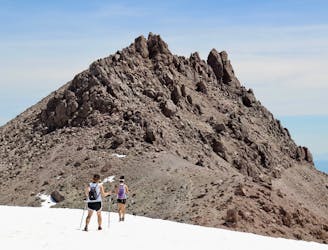
The must-do hike to the summit of the park's namesake mountain.
Difficult Hiking
- Distance
- 7.5 km
- Ascent
- 611 m
- Descent
- 611 m

Lassen's largest hydrothermal area, full of heated water and vapors spewing from underground.
Hiking Moderate

Lassen Volcanic National Park is most famous for its hydrothermal areas—places where pungent steam and scalding water emit from vents in the ground. The largest such area is Bumpass Hell, and it’s a must-do hike in this national park. In Bumpass Hell, you’ll see a variety of different hydrothermal features, including turquoise pools that bubble with hot gases, pits that gurgle with soupy mud, and fumaroles that belch steam into the air.
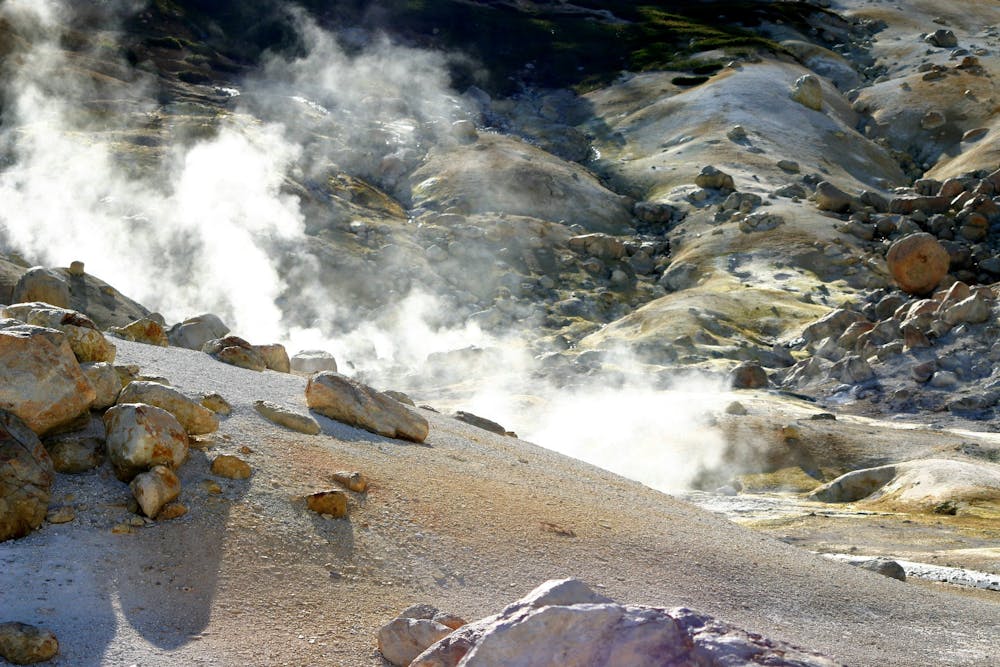
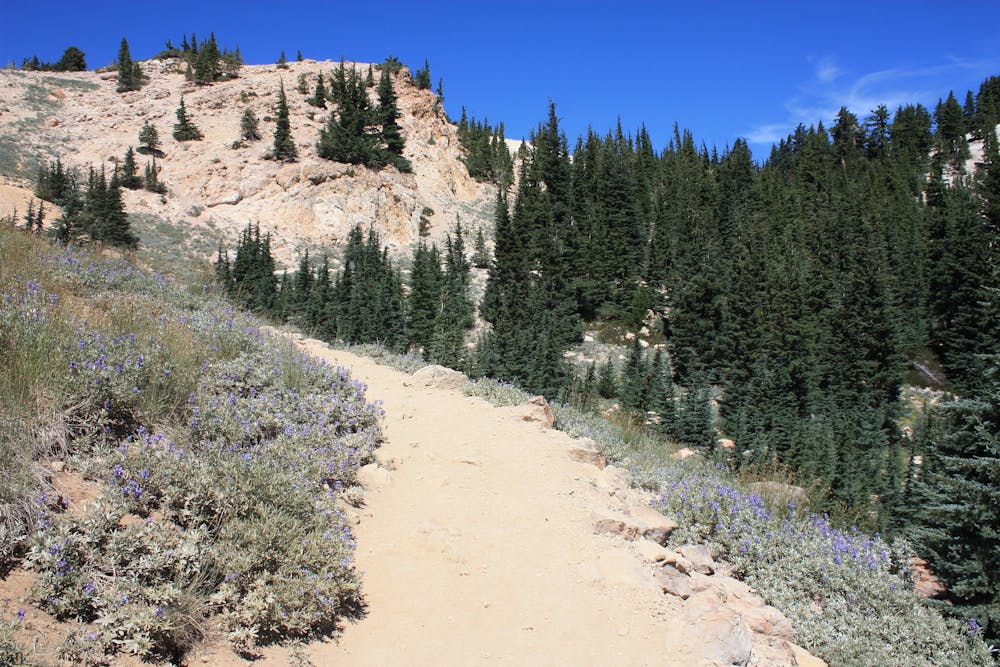
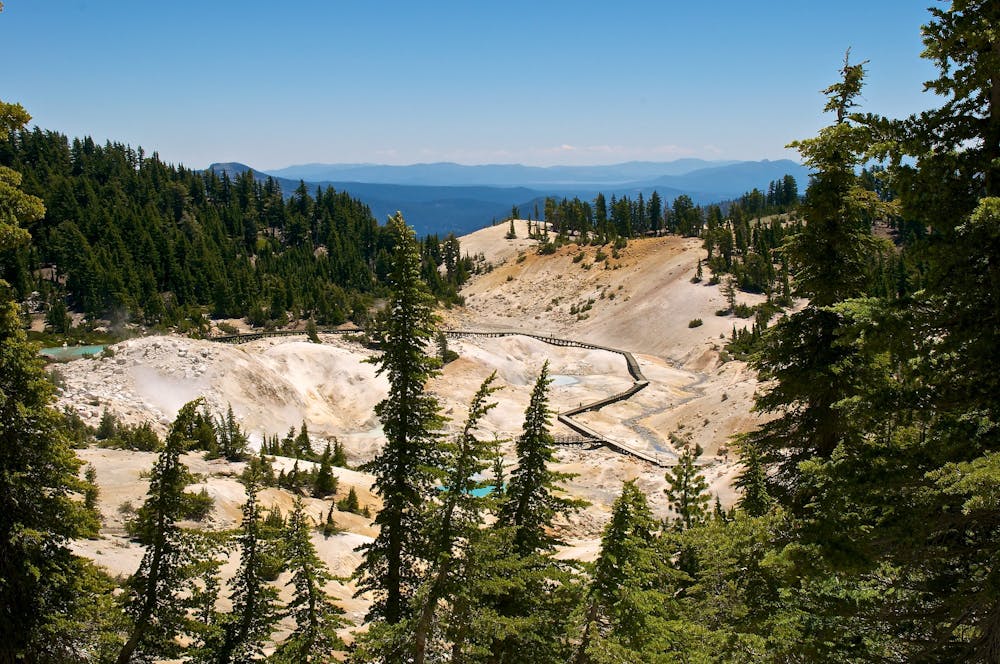
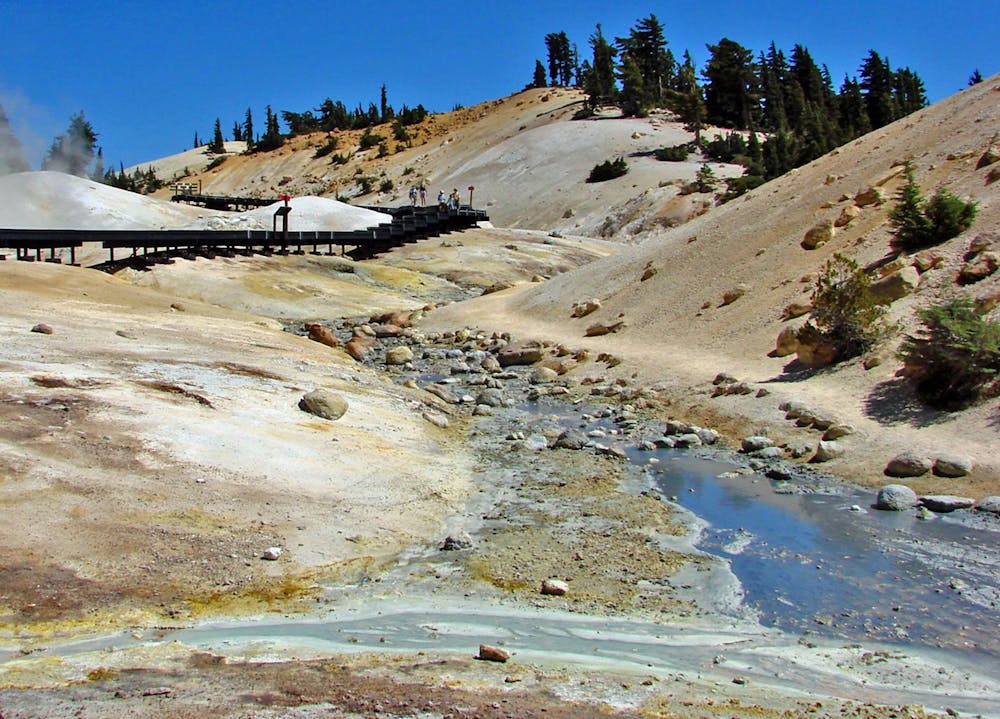
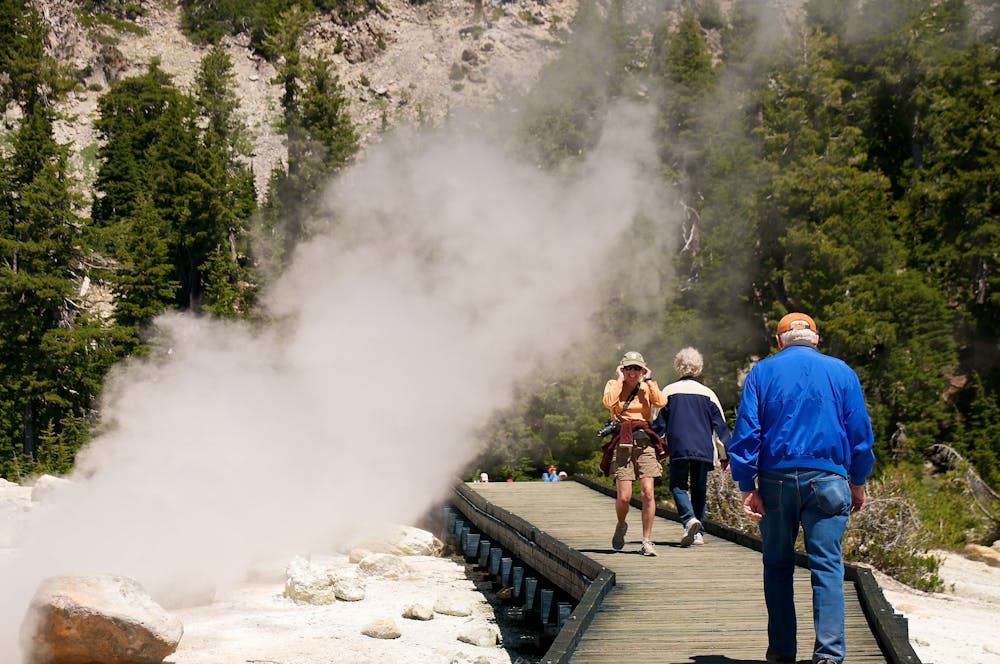

The trail starts out across a rocky hillside studded with conifers. In about half a mile, a short spur leads to an overlook of the valley below, and the cliffy crown of Brokeoff Mountain on the other side. The trail continues upward through scattered trees and manzanita shrubs to reach the crest of a ridge, then down the other side where the view of Bumpass Hell unfolds.
It’s a basin of brightly colored soil and milky pools, where pungent vapors belch from cracks and holes in the ground. The smell of sulfur and earthy fumes intensifies as you get closer, but your nostrils will soon adjust. The trail curves down the hillside, into a copse of trees, then emerges in the pit of Bumpass Hell.
A few different trails meander through the basin, some of which are boardwalks. It’s important to always stay on the trail, both to prevent erosion and to protect yourself. The ground is very thin in places, with boiling water beneath. Along with signs that explain the geology, you can find one that tells of Kendall Vanhook Bumpass, an early guide in the area who lost his leg to a hidden mud pot, and thus lent this “hell” his name.
The area receives many feet of snow due to its high elevation near Lassen Peak, and even in this steamy valley, the snow is slow to melt. Deep snow can hide pits and hot water, creating significant safety hazards, so the park keeps Bumpass Hell Trail closed until it’s sufficiently melted out. According to the park’s website, the trail usually opens in time for the Fourth of July weekend, but in some years, it’s later. When Bumpass Hell is closed, you can see similar features at smaller hydrothermal areas like Sulphur Works, Devils Kitchen, and Boiling Springs Lake.
Source: https://www.nps.gov/lavo/planyourvisit/hikingbumpasshell.htm
Moderate
Hiking along trails with some uneven terrain and small hills. Small rocks and roots may be present.
1.2 km away

The must-do hike to the summit of the park's namesake mountain.
Difficult Hiking
3.2 km away

Three exquisite alpine lakes, linked by a path through sunny and colorful woodland.
Moderate Hiking
3.6 km away
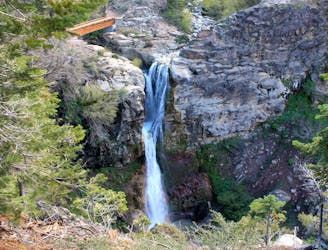
Hilly forest trail to the top of a 75-foot waterfall in a deep gorge.
Moderate Hiking
4.3 km away
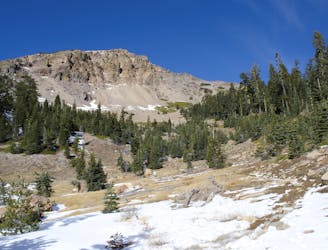
Unrelenting ascent on a good trail, to one of the national park's most dramatic peaks.
Difficult Hiking
4.7 km away
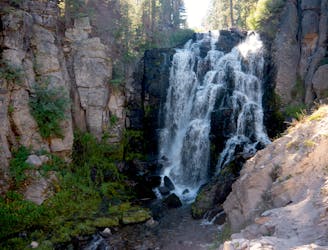
Ultra-popular hike to a cascading creek and waterfall in a verdant gorge.
Difficult Hiking
8.3 km away
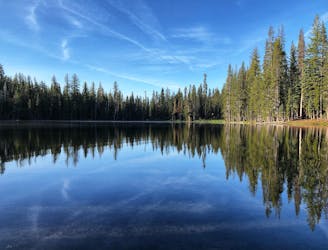
An extended stroll through Lassen’s backcountry interior, packed with pristine lakes in subalpine forest.
Moderate Hiking

11 routes · Hiking
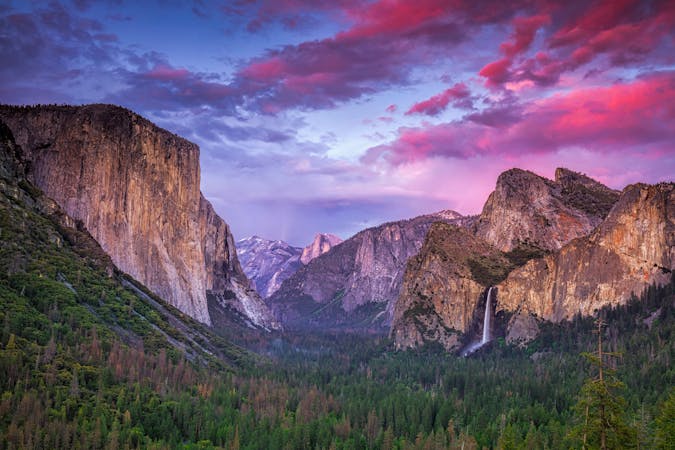
63 routes · Alpine Climbing · Hiking